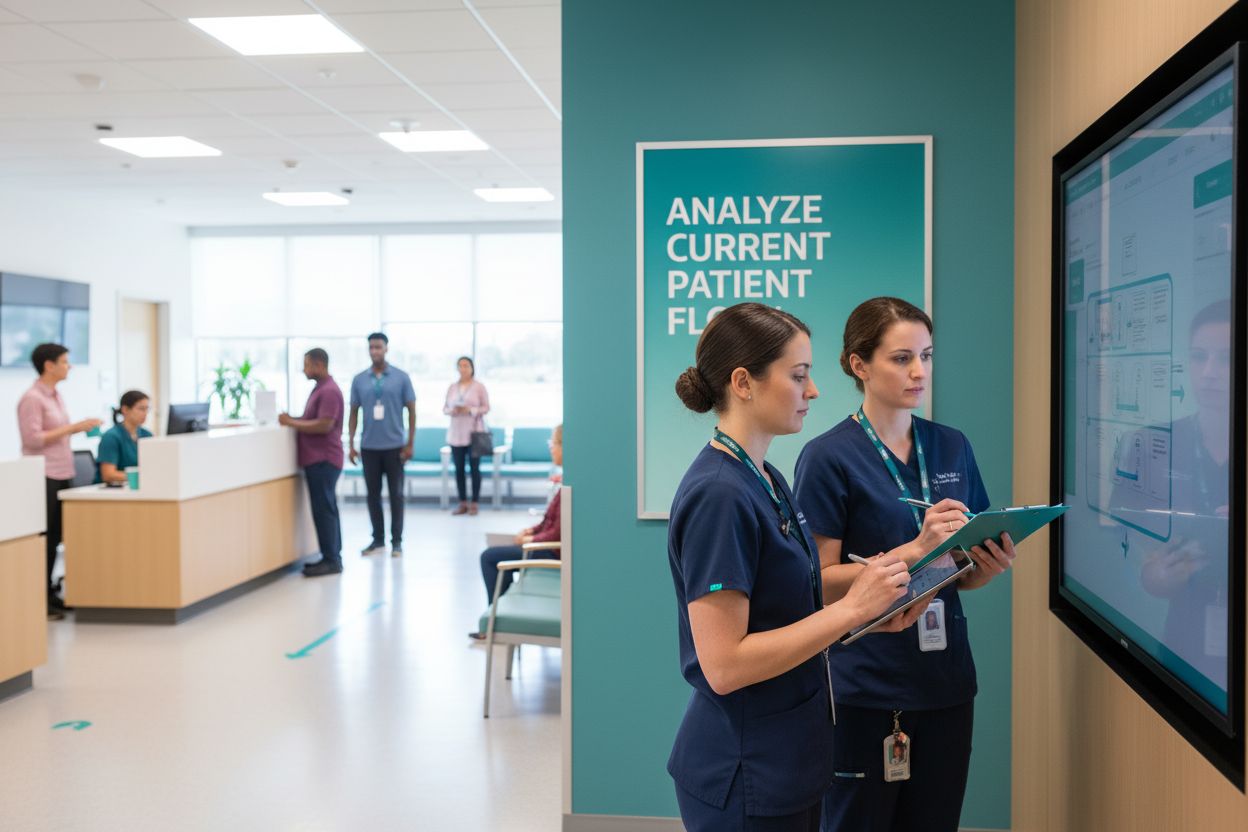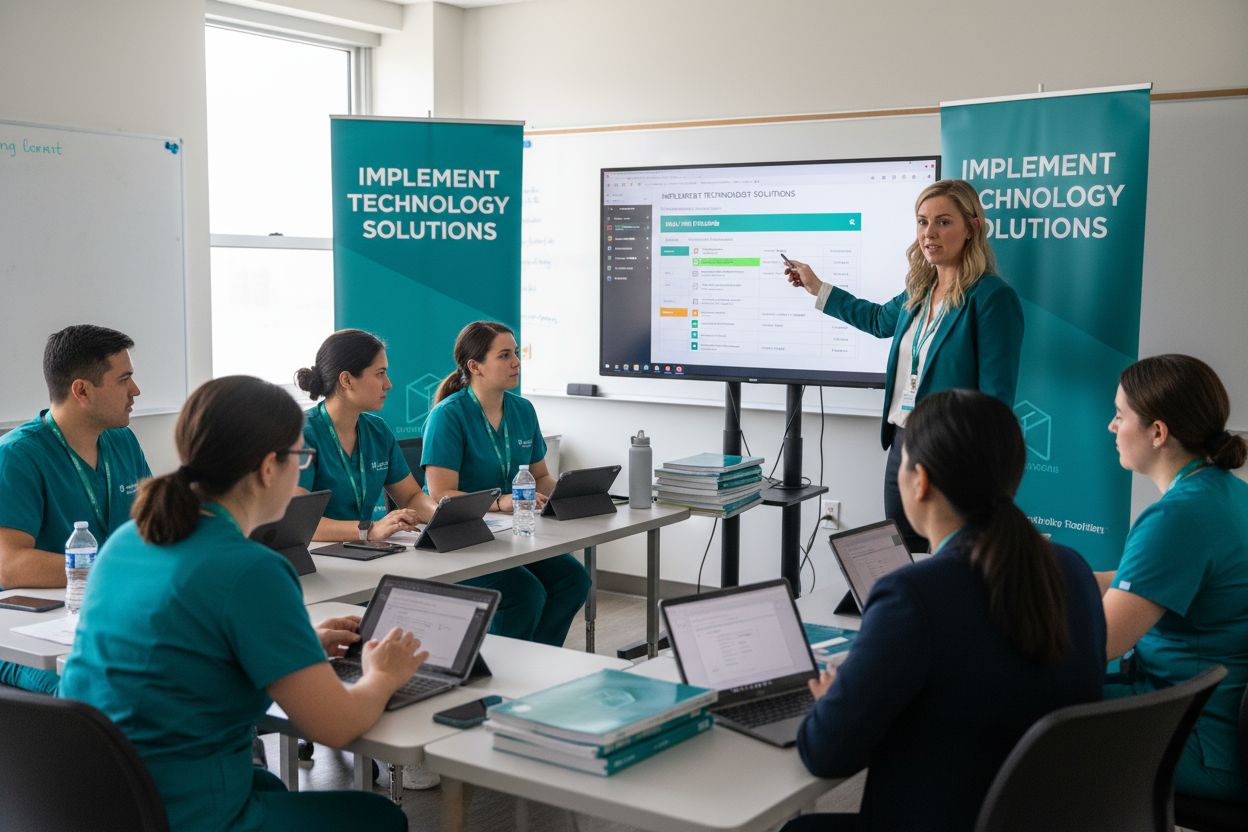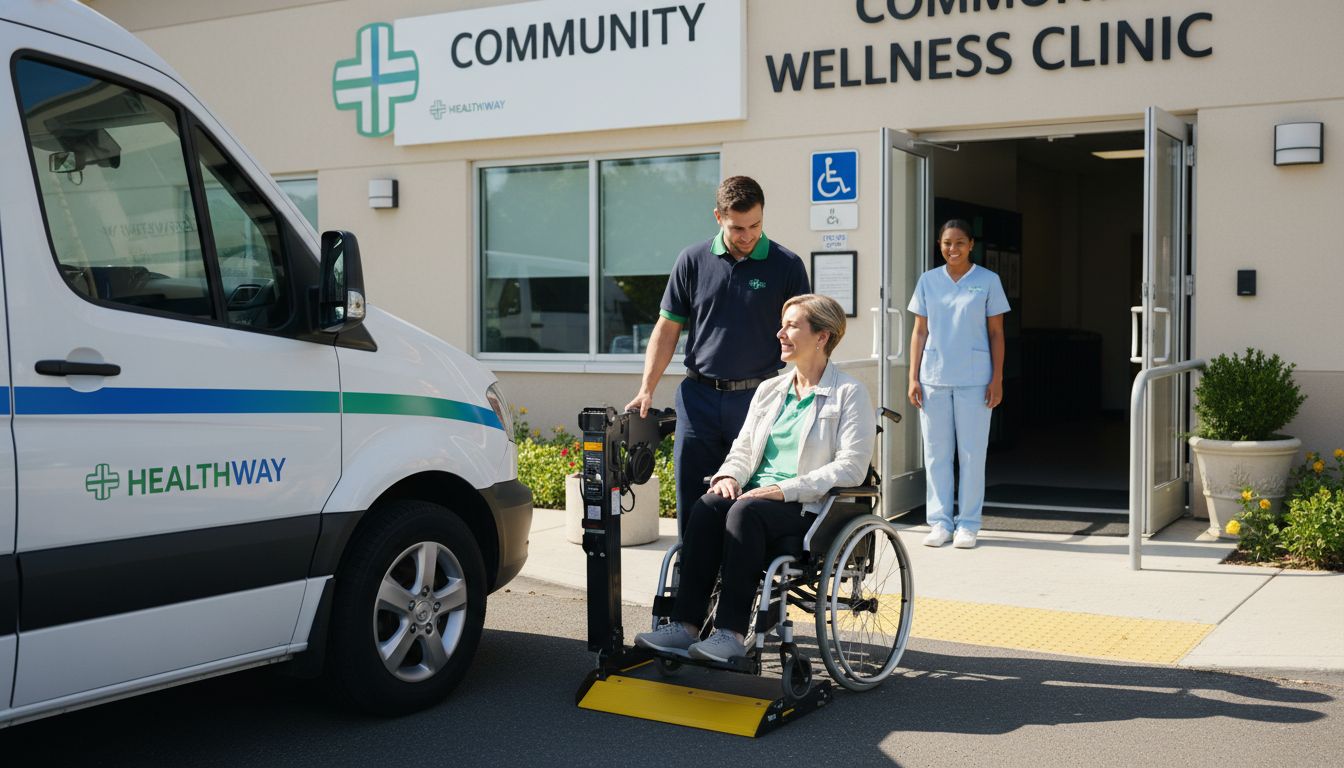How to Reduce Patient Wait Times Effectively

Cutting patient wait times depends on far more than just moving faster or adding more staff. Some clinics have uncovered up to 40 percent of daily delays simply by mapping out where every patient really spends their time inside the facility. Most people assume wait time problems start in the waiting room, but surprising delays often hide in the handoff between departments or the tiniest steps of registration. That means the biggest gains come from spotting these bottlenecks early and rethinking the smallest details most clinics overlook.
Table of Contents
- Step 1: Analyze Current Patient Flow
- Step 2: Identify Bottlenecks In Service Delivery
- Step 3: Implement Technology Solutions
- Step 4: Train Staff On Efficient Practices
- Step 5: Monitor And Adjust Processes Regularly
Quick Summary
| Key Point | Explanation |
|---|---|
| 1. Map the Patient Journey | Understand patient flow by tracking their entire experience from arrival to discharge to identify delays. |
| 2. Identify Service Bottlenecks | Analyze collected data to pinpoint consistent delays and obstacles impacting patient processing efficiency. |
| 3. Leverage Technology Solutions | Use digital tools for scheduling and communication to streamline workflows and reduce wait times. |
| 4. Train Staff on Best Practices | Implement structured training focused on efficient workflows, communication, and team collaboration to enhance service delivery. |
| 5. Monitor and Adjust Regularly | Establish continuous data review and feedback mechanisms to adapt and improve patient flow strategies over time. |
Step 1: Analyze Current Patient Flow
Reducing patient wait times begins with a thorough understanding of your current patient flow. This critical first step involves comprehensive observation and data collection to identify bottlenecks, inefficiencies, and potential areas of improvement within your healthcare facility.
Start by mapping the entire patient journey from arrival to discharge. Detailed observation is key to uncovering hidden delays and process interruptions. Track each patient’s movement through different departments, noting exact times spent in waiting areas, registration, examination rooms, diagnostic testing, and final discharge. Use stopwatches, time tracking software, or dedicated patient flow management tools to capture precise data.
Learn more about comprehensive patient flow strategies by examining your current processes from multiple perspectives. Interview staff members across different departments to gain insights into their experiences. Frontline workers like nurses, registration staff, and technicians often recognize bottlenecks that might not be immediately apparent in standard documentation.
Document your findings meticulously, creating a visual representation of patient movement. Consider using process mapping techniques that highlight:
- Total time spent in each department
- Waiting periods between steps
- Staff interaction durations
- Equipment or resource allocation challenges
Pay special attention to transition points between departments, as these are often where significant time is lost. Look for patterns such as consistent delays during specific times of day, specific staff shift changes, or particular types of patient encounters.
Successful analysis requires a combination of quantitative data and qualitative observations. Collect both numerical metrics and staff feedback to build a comprehensive understanding of your patient flow challenges. By thoroughly documenting current processes, you’ll create a baseline for measuring future improvements and developing targeted strategies to reduce wait times effectively.

Step 2: Identify Bottlenecks in Service Delivery
After mapping your patient flow, the next critical step is identifying specific bottlenecks that create unnecessary delays in service delivery. Bottlenecks are systemic obstacles that slow down patient processing and increase overall wait times, ultimately impacting patient satisfaction and healthcare efficiency.
Systematic bottleneck identification requires a multifaceted approach. Begin by analyzing the time stamps and movement patterns collected during your initial patient flow assessment. Look for consistent points of friction where patients experience unexpected or prolonged waiting periods. These might include registration desks with complex paperwork, diagnostic imaging centers with outdated scheduling systems, or examination rooms with inefficient patient routing.
Learn more about understanding patient flow barriers that can significantly impact service delivery. Conduct focused interviews with staff members who interact directly with patients during different stages of their healthcare journey. Ask specific questions about recurring challenges, equipment limitations, and communication breakdowns that contribute to delays.
Utilize quantitative and qualitative data collection methods to create a comprehensive bottleneck profile. Some key areas to investigate include:
- Staff-to-patient ratios during peak hours
- Equipment availability and maintenance schedules
- Communication protocols between different departments
- Technology integration and potential system inefficiencies
Advanced healthcare facilities increasingly use digital tools and computer simulations to model patient flow and predict potential bottlenecks. According to research in healthcare operations management, computational modeling can help predict wait times and identify process improvements with remarkable accuracy.
Verification is crucial in this step. A successful bottleneck identification process will result in a clear, documented list of specific points where patient flow becomes compromised. Each identified bottleneck should include estimated time loss, potential root causes, and initial recommendations for improvement. By meticulously documenting these insights, you create a solid foundation for developing targeted strategies to streamline service delivery and reduce patient wait times.
Step 3: Implement Technology Solutions
Technology offers powerful strategies for reducing patient wait times by streamlining administrative processes and improving communication across healthcare systems. The goal is to leverage digital tools that automate and optimize patient flow, transforming traditional manual workflows into efficient, real-time processes.
Explore how technology enhances patient appointment logistics by focusing on integrated digital solutions. Begin by selecting software platforms that offer comprehensive patient management capabilities. Look for systems that provide features like online scheduling, automated check-in, real-time tracking, and seamless communication between departments. Electronic health record (EHR) integrations are particularly crucial, allowing instant access to patient information and reducing time spent on manual data entry.
According to research in healthcare technology implementation, self-service technologies can dramatically reduce wait times. Consider implementing patient-facing technologies such as:
- Digital check-in kiosks
- Mobile appointment scheduling applications
- Real-time wait time tracking systems
- Automated patient communication platforms
Strategic technology implementation requires careful planning and staff training. Conduct comprehensive training sessions to ensure all team members understand how to use new digital tools effectively. Create step-by-step guides and provide ongoing technical support to minimize resistance and maximize adoption. Select technologies that offer intuitive interfaces and integrate smoothly with existing systems to reduce learning curves.
Consider the scalability and flexibility of technological solutions. The best systems will allow for future updates and customization based on your specific healthcare environment. Prioritize platforms that offer analytics dashboards, allowing you to continuously monitor and adjust patient flow strategies. By combining smart technology with strategic implementation, you can create a more responsive and efficient healthcare experience that significantly reduces wait times and improves overall patient satisfaction.

Step 4: Train Staff on Efficient Practices
Reducing patient wait times is not just about technology and processes but fundamentally about empowering healthcare staff with the right skills and knowledge. Comprehensive staff training becomes the critical bridge between identifying bottlenecks and creating sustainable improvements in patient flow and service delivery.
Discover strategies for operational efficiency in healthcare by developing a structured training approach. Begin by creating standardized protocols that clearly outline efficient workflows for each department. These protocols should focus on minimizing unnecessary steps, improving communication, and establishing clear expectations for patient processing.
According to research on healthcare team performance, effective training programs dramatically reduce wait times by enhancing team coordination and communication. Implement interactive training sessions that go beyond traditional lecture formats. Use role-playing scenarios, simulation exercises, and hands-on workshops that allow staff to practice streamlined processes in a controlled environment.
Develop training modules that specifically address:
- Efficient patient routing techniques
- Effective communication strategies
- Technology platform navigation
- Quick documentation methods
- Cross-departmental collaboration skills
Continuous learning is key to maintaining improved performance. Establish regular review meetings where staff can share insights, discuss challenges, and collectively brainstorm process improvements. Create a feedback mechanism that allows frontline workers to contribute suggestions for enhancing patient flow.
Below is a summary table outlining key staff training focus areas and their intended impact on reducing patient wait times.
| Training Focus Area | Description | Intended Impact |
|---|---|---|
| Efficient Patient Routing | Techniques for moving patients through departments effectively | Reduces unnecessary waiting and streamlines flow |
| Effective Communication | Strategies for clear, timely exchanges among staff | Minimizes miscommunication delays and errors |
| Technology Platform Navigation | Guidance on using digital check-in, scheduling, and EHR systems | Increases adoption of tools that save administrative time |
| Quick Documentation Methods | Tips for faster, accurate record-keeping | Speeds up transitions and reduces administrative backlog |
| Cross-Department Collaboration | Building teamwork between units and roles | Facilitates smoother patient handoffs and reduces bottlenecks |
Verification of successful training involves tracking specific metrics such as reduced processing times, improved patient satisfaction scores, and decreased administrative errors. Conduct periodic assessments to ensure that training translates into tangible improvements in patient wait times. By investing in comprehensive staff development, healthcare organizations can create a culture of efficiency that goes beyond individual technological solutions.
Step 5: Monitor and Adjust Processes Regularly
Reducing patient wait times is an ongoing journey that requires continuous evaluation and refinement. Establishing a robust monitoring system is crucial for maintaining and improving healthcare efficiency. This final step transforms your initial improvements into a dynamic, responsive patient flow management strategy.
Implement a comprehensive data collection and analysis framework that captures real-time performance metrics. Utilize advanced analytics tools that provide granular insights into patient processing times, staff performance, and potential bottlenecks. According to research in continuous quality improvement, consistent data-driven monitoring is the key to sustainable operational excellence.
Explore advanced healthcare operational strategies by developing a systematic approach to process evaluation. Create a dashboard that tracks critical performance indicators such as:
- Average patient wait times
- Patient throughput rates
- Staff response times
- Patient satisfaction scores
- Resource utilization rates
The Plan-Do-Study-Act (PDSA) cycle provides an excellent framework for continuous improvement. Begin by establishing baseline measurements from your initial process improvements. Regularly schedule comprehensive reviews where your team can analyze collected data, identify emerging patterns, and develop targeted interventions. These reviews should be collaborative, involving staff from different departments to gain diverse perspectives on potential improvements.
Implement a flexible adjustment mechanism that allows for quick modifications to your patient flow strategies. This might involve minor tweaks to staff scheduling, technology configurations, or communication protocols. Maintain open communication channels that encourage staff to provide real-time feedback and suggestions for process optimization.
Successful monitoring goes beyond numerical metrics. Conduct periodic patient surveys and gather qualitative feedback to understand the human experience behind the numbers. Verify your improvement efforts by looking for consistent reductions in wait times, increased patient satisfaction, and more efficient resource allocation. By treating patient flow as a continuous improvement process, healthcare organizations can create increasingly responsive and patient-centered service delivery models.
Ready to Eliminate Patient Wait Times?
Imagine your facility where bottlenecks become a thing of the past. The article describes the frustration and lost time caused by inefficient patient flow, complex scheduling, lack of real-time updates, and poor staff communication. These pain points directly impact the patient experience and your operational efficiency. With precise mapping of patient journeys and careful identification of delays, you already know data-driven improvement is possible—but without the right tools and automation, sustainable change remains out of reach.

Why stay stuck in outdated processes? VectorCare provides a proven digital platform to tackle every challenge highlighted in your workflow analysis. Our suite empowers healthcare teams to automate appointment scheduling, manage vendor coordination, and communicate changes instantly. By leveraging scheduling optimization, real-time updates, and secure collaboration, you can move from bottlenecks to seamless patient movement in every department. Make your process improvements last.
Start now by visiting VectorCare and discover how leading healthcare organizations use our technology to drastically reduce wait times and transform patient logistics. Take control of your workflow and unlock higher satisfaction for both patients and staff today.
Frequently Asked Questions
How can analyzing patient flow help reduce wait times?
Understanding the current patient flow allows healthcare facilities to identify inefficiencies and bottlenecks in their processes, which can then be targeted for improvement to enhance overall service delivery.
What technologies can be implemented to streamline patient wait times?
Technological solutions such as digital check-in kiosks, online appointment scheduling, real-time tracking systems, and automated patient communication platforms can significantly reduce wait times by improving workflow efficiency.
Why is staff training important in reducing patient wait times?
Comprehensive staff training equips healthcare workers with the skills to follow efficient workflows, communicate effectively, and utilize technology, ultimately leading to improved patient flow and reduced wait times.
What ongoing practices should be adopted to maintain low patient wait times?
Regular monitoring and adjustment of processes using data collection, performance metrics, and staff feedback are crucial for sustaining improvements in patient wait times and ensuring continuous operational excellence.
Recommended
- 6 Ways to Improve Patient Flow Within Healthcare Facilities | VectorCare
- Patient Flow Barriers: Impact to Hospital Efficiency and Patient Outcomes | VectorCare
- Understanding Patient Scheduling Best Practices for Providers
- 8 Creative Ways to Increase Patient Satisfaction
- Understanding Efficient Scheduling Methods for Better Planning - WhenNOT Blog



